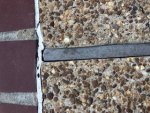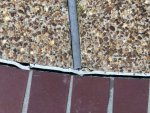- Nov 12, 2017
- 12,639
- Pool Size
- 12300
- Surface
- Plaster
- Chlorine
- Salt Water Generator
- SWG Type
- Pentair Intellichlor IC-40
+1 on trim-a-slab. Easy to install and looks sharp on driveway expansion joints. I think they sell through Lowe’s now - though you can buy direct from them if you live in Houston area.
I just watched the video. This could be an excellent way to go for the OP. Super easy installation. And I see now why the stuff wouldn't get pushed down into the joint by stepping on it. Looks like it would hold up better than the Sika, too. The only caution: this stuff looks to be more appropriate for a control joint, which doesn't expand and contract. If put in a true expansion joint, that has a lot of movement, I wonder how well it will do... I'm going to get some to fix my sidewalk!



